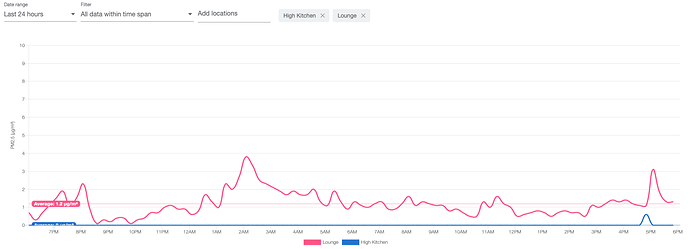I’ll start with a graph, because a picture says a thousand words.
For context, ‘Lounge’ is an older sensor (purchased June this year) that is in front of a large 12x24" H14 HEPA filter (part of a project I’m working on) - and ‘High Kitchen’ (purchased September this year) is near the ceiling of the kitchen, pretty much above ‘Lounge’, and definitely nowhere near the HEPA filter.
AG Support tells me the PM0.3 numbers are not calibrated so can’t be compared between different batches of the PM sensor - fair enough. But PM2.5 is still considerably inaccurate - either one way or the other.
I’ve got two older sensors, and three newer sensors, and all three newer sensors report PM levels considerably below the older sensors when placed right together.
It would appear to me that either the older sensors are inaccurate, or the newer sensors are inaccurate, because they can’t both be inaccurate reporting numbers so wildly different?

